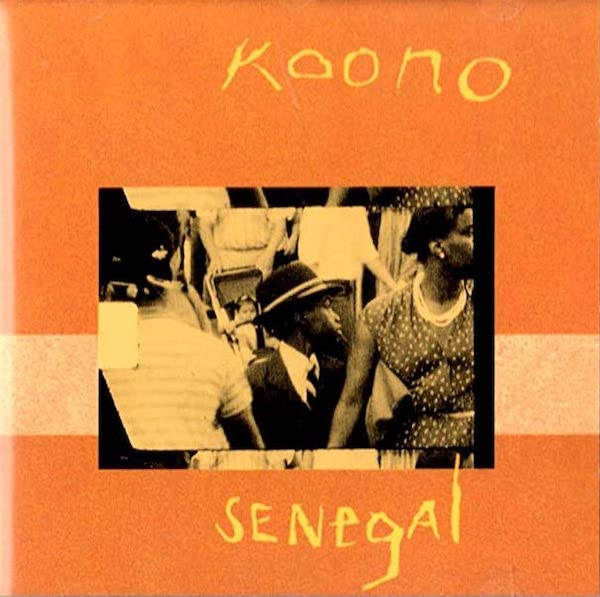
Warning: today’s post might be mercifully concise. Not so recently, while scouring through my digital album collection, I spotted this interesting release buried deep in my recovered hard drive – Koono’s Senegal. At first, I wondered, was this something I found while on an African music kick? Firing up my laptop I heard something a bit more offbeat than I imagined. Senegal hit me straight away with strains of fusion and hypertechnical jazz. Then, as I skipped to the next track, I was met with something more mysterious. A vocoder-led ballad that met the spirit of the tropics with the je ne sais quoi of ambient music. Who or whom was Koono and why “Senegal”?
I’d go on to discover that what I was listening to was in fact not of African origin but had Teutonic roots. That Koono was the stage name of one German jazz pianist, Kuno Schmidt. That, weirdly enough, the label that released Senegal (Hot Wires) was both a purveyor of fine bass guitar strings and parts…but also bass guitar-centric records. Looking at its roster – Carol Kaye, Jorge Degas, Percy Jones – I wondered: why here and why Kuno?

It appears that Kuno was a prodigious talent that simply needed a place (or any place) to feel what he wanted to record. It’s something that was apparent for him from a young age in West Germany. When most young teens were thinking about university, Kuno was already working as a studio musician at age 16 and shortly under his own Kuno Schmidt Group. Then in his 20s, Kuno would already find himself on various European jazz stages, debuting with Kitty Winter’s Gipsy Nova.
While working with iconic Belgian jazz player, Toots Thielemans, and composing for German trumpeter Walter Scholz, the late Erich Zawinul (son of jazz giant Joe Zawinul), caught wind of a young musician who many in the Deutschland were comparing his dad to. On stage and on his vamps, what struck Erich would be Kuno’s very non-Western ideas. In many ways, Kuno was following the evolution of Zawinul’s “third stream” way of thinking, one that had evolved into a fourth way (mixing jazz with “world” music). If only Kuno could just get his take on tape, others would understand his path – something Erich would work on procuring with the Hot Wires label.
The connection with that bass-centric label would afford Kuno the opportunity to enlist two elite practitioners like Biréli Lagrène and Norbert Dömling (formerly of Embryo). His Kuno Schmidt group would be rounded off by Hungarian sax man Tony Lakatos and drummer Werner Schmitt. Vocal duties would be split among himself and Kitty Winter. Recording would be done in Ludwigsburg, West Germany.
Somewhere, in the vicinity of Stuttgar (of all places), Kuno would use the influence of the infamous Dakar Rally to revisit and experiment with the influence of African music on European jazz. Adopting the moniker, Koono, a pseudo-Africanized spelling of his name, allowed him to explore the more groovy, polyrhythmic side of modal music. That idea of speeding through Africa, of stopping in desert oases, jumping through rugged terrain, met copacetic forces in the music – driven by like-minded twists and hair-pin turns of wayward jazz that flinged on highly affected non-Western musical influences.
1989’s Senegal is an album that adds up more than the sum of its parts. Songs like “Mango Tango” led by Kuno’s offbeat piano and organ jabs, imagine “race music” for futuristic cyborg-led expeditions. Somewhere, the experiential vocoder balladry of “… To Shining Z’ee” unfurls like an esoteric takes Miles’ “Maiysha”. Songs like “Interstate 15” will exist for those into jazz noodling but more interesting downtempo explorations like “Kaibab Forest” and “Jungle Book” err on the right side of musical appropriation by appropriating “African” motifs in leftfield jazz that is dreamy as heaven.
It’s not often that I share a mood album but this might be one of them that benefits from a few of those remaining sweltering summer days. The brainy grooves of the title track speak to me for some reason. Others like “The Cloister” remind me that there are more ways to amp up the “electro” part of electroacoustic music in meaningful ways – case in point, “The Swamp” from this same album. If you’ve got something more like it – driving, wandering and a bit meandering – know that I’ll be a fan of it (and know that I got more of this offbeat “jazz not jazz” to share). As for now, this album, you bet this one can grow to be quite endearing to you, too.
